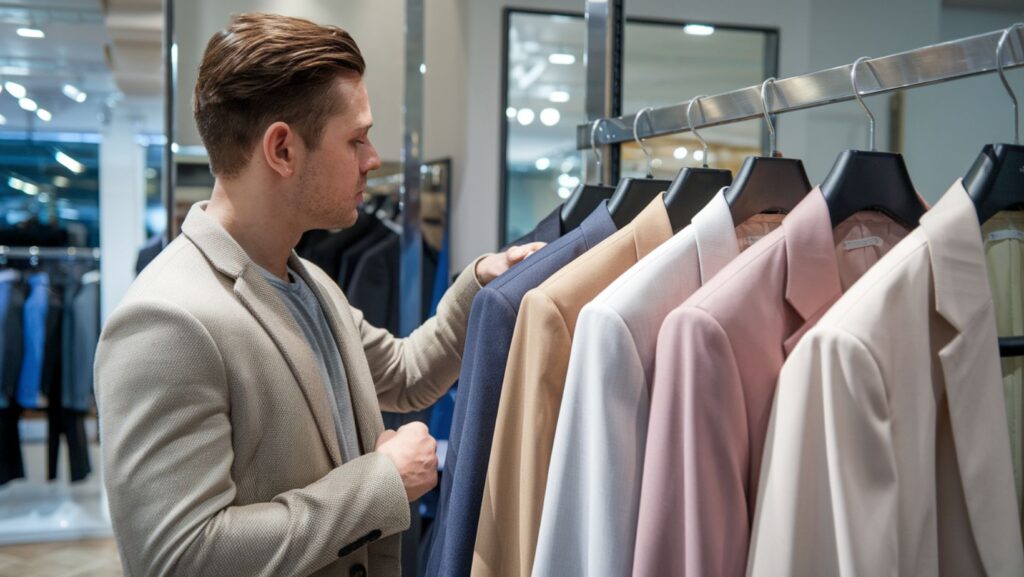Color psychology is the study of how different colors can affect human behavior and emotions. Each color has its own unique psychological impact, and understanding these effects can help you make informed decisions when choosing colors for your wardrobe.
For example, red is often associated with passion, energy, and excitement, while blue is linked to calmness, trust, and stability. Yellow is often seen as cheerful and optimistic, while green is associated with nature, growth, and harmony.
Understanding the psychological impact of different colors can help you create a wardrobe that reflects your personality and makes you feel confident and comfortable.
In addition to the psychological impact of individual colors, it’s also important to consider the cultural and personal associations that different colors may have.
For example, in some cultures, white is associated with purity and innocence, while in others it may be linked to mourning and death. Similarly, certain colors may have personal significance for you based on your own experiences and memories.
By taking these factors into account, you can create a wardrobe that not only looks great but also feels meaningful and authentic to you.
Identifying Your Personal Color Preferences

When it comes to choosing a color palette for your wardrobe, it’s important to consider your personal color preferences. Some people are naturally drawn to certain colors, while others may have strong aversions to certain shades.
Pay attention to the colors that you feel most comfortable and confident wearing, as well as the ones that make you feel uneasy or self-conscious. You can also take inspiration from the colors that you are naturally drawn to in other areas of your life, such as home decor or artwork.
By identifying your personal color preferences, you can create a wardrobe that feels uniquely “you” and reflects your individual style and personality.
Another way to identify your personal color preferences is to consider the colors that flatter your skin tone, hair color, and eye color. Certain shades can make your complexion appear brighter and more radiant, while others may wash you out or make you look tired.
Experiment with different colors against your skin to see which ones make you look and feel your best. You can also seek out the advice of a professional stylist or color consultant who can help you identify the most flattering colors for your unique features.
Choosing a Base Color Palette
Once you have a better understanding of the psychology of color and your personal color preferences, it’s time to choose a base color palette for your wardrobe.
Your base colors will form the foundation of your wardrobe and will be the most versatile and timeless shades that you can build upon with accent colors and accessories.
Neutral colors such as black, white, gray, navy, and beige are classic choices for a base color palette, as they can be easily mixed and matched with other colors and are suitable for a wide range of occasions.
When choosing your base color palette, consider the colors that you feel most comfortable wearing on a day-to-day basis. If you prefer a minimalist and understated style, you may opt for a base color palette of black, white, and gray.
If you prefer a more relaxed and casual look, you may choose a base color palette of navy, beige, and olive green. Your base color palette should reflect your personal style and lifestyle, as well as the practical considerations of your daily activities and wardrobe needs.
Adding Accent Colors for Variety
Once you have established a base color palette for your wardrobe, you can add accent colors to introduce variety and interest. Accent colors are the shades that you use to add pops of color to your outfits, whether through clothing, accessories, or makeup.
When choosing accent colors, consider the psychological impact of different shades and how they complement or contrast with your base colors.
For example, if your base color palette consists of neutral shades such as black and white, you may choose accent colors such as red or cobalt blue to add a bold and vibrant touch to your outfits.
When adding accent colors to your wardrobe, it’s important to strike a balance between variety and cohesion. Too many accent colors can make your wardrobe feel disjointed and overwhelming, while too few can make it feel monotonous and uninspired.
Aim to choose a few accent colors that complement each other and work well with your base color palette, allowing you to mix and match them in different combinations for a range of looks.
By carefully selecting accent colors that reflect your personal style and preferences, you can create a wardrobe that feels cohesive and harmonious while still offering plenty of variety.
Coordinating Colors for Different Occasions
When coordinating colors for different occasions, it’s important to consider the specific context and dress code of each event.
Certain colors may be more appropriate or expected for formal occasions such as weddings or business meetings, while others may be better suited for casual events such as brunch with friends or a day at the beach.
Pay attention to the cultural and social norms surrounding color choices for different occasions, as well as any specific guidelines or expectations that may apply.
In addition to considering the context of each occasion, it’s also important to think about the mood and atmosphere that you want to create with your outfit.
For example, if you’re attending a festive celebration such as a birthday party or holiday gathering, you may choose bright and cheerful colors that reflect the joyful spirit of the event.
On the other hand, if you’re attending a somber occasion such as a funeral or memorial service, you may opt for more subdued and respectful colors that convey a sense of solemnity and reverence.
By coordinating your colors thoughtfully and intentionally for different occasions, you can ensure that your outfits are not only stylish but also appropriate and respectful.
Incorporating Patterns and Textures into Your Wardrobe
In addition to choosing colors for your wardrobe, it’s important to consider how patterns and textures can add depth and interest to your outfits.
Patterns such as stripes, polka dots, florals, and plaids can introduce visual variety and personality to your wardrobe, while textures such as lace, knitwear, denim, and leather can add tactile richness and dimension.
When incorporating patterns and textures into your wardrobe, consider how they interact with your chosen color palette and how they contribute to the overall look and feel of your outfits.
When choosing patterns for your wardrobe, consider how they complement or contrast with your base colors and accent colors. For example, if your base color palette consists of neutral shades such as black and white, you may choose patterns in bold and vibrant colors to add visual interest to your outfits.
On the other hand, if your base color palette consists of earthy tones such as olive green and rust orange, you may opt for patterns in natural motifs such as botanical prints or animal prints to enhance the organic feel of your wardrobe.
By carefully selecting patterns that harmonize with your chosen color palette, you can create outfits that feel cohesive and well-coordinated.
Maintaining a Cohesive Color Palette Over Time

As you continue to build and evolve your wardrobe over time, it’s important to maintain a cohesive color palette that reflects your personal style and preferences. This means being mindful of the new pieces that you add to your wardrobe and how they fit into your existing color scheme.
When shopping for new clothing or accessories, consider how they will work with your base colors and accent colors, as well as how they will contribute to the overall look and feel of your wardrobe.
One way to maintain a cohesive color palette over time is to invest in versatile pieces that can be mixed and matched with different colors and styles.
For example, a classic black blazer or a white button-down shirt can be paired with a wide range of colors and patterns, making them valuable additions to any wardrobe.
Similarly, accessories such as scarves, belts, and handbags can be used to introduce new colors and textures into your outfits without disrupting the overall cohesion of your wardrobe.
By being intentional about the new pieces that you add to your wardrobe and how they fit into your existing color palette, you can ensure that your wardrobe remains cohesive and harmonious over time.
In conclusion, understanding the psychology of color is an important aspect of creating a wardrobe that reflects your personal style and makes you feel confident and comfortable.
By identifying your personal color preferences and choosing a base color palette that reflects them, you can create a wardrobe that feels uniquely “you” while still offering plenty of variety.
Adding accent colors for variety, coordinating colors for different occasions, incorporating patterns and textures into your wardrobe, and maintaining a cohesive color palette over time are all important considerations when building a wardrobe that feels cohesive and harmonious.
By being intentional about the colors that you choose for your wardrobe and how they interact with each other, you can create outfits that not only look great but also feel meaningful and authentic to you.

